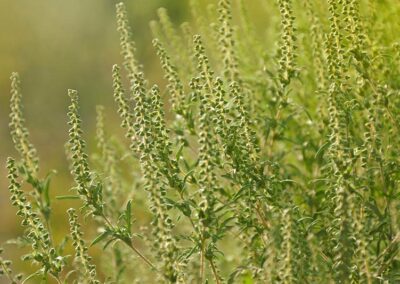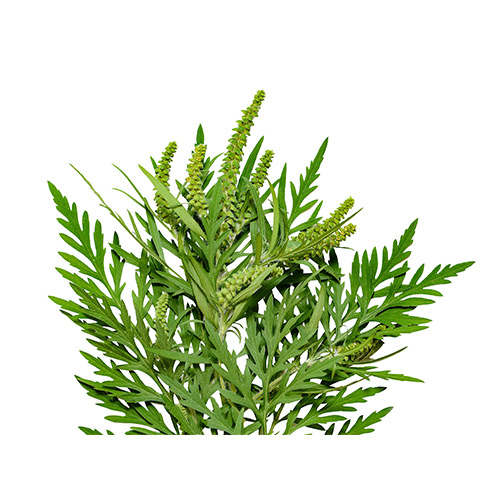
Western Ragweed

Pollen Type: Weed
Cross-Reactivity: Beach Bur, Bur/Rabbit Bush Ragweed, Canyon Ragweed, Desert Ragweed, False Ragweed, Silver Ragweed
HS Allergy Extract: Ragweed, Western
Family: Compositae
Genus/Species: Ambrosia psilostachya
Common Names: Western Ragweed
Distribution: From Louisiana and Illinois westward into California, Idaho, and Saskatchewan.
Locations: It favors disturbed soil and is commonly found on roadsides and in waste ground.
Pollinating Period: Mostly August & September. Some scattered flowering from June into November in milder areas.
Pollination Method: Wind-pollinated
Description: Western Ragweed is a rough herbaceous perennial growing 1’-5’ feet. Its main stem grows from branching rootstalks (rhizomes). Its other stems are slender and branched, usually 1’- 2’ tall. It looks similar to Short Ragweed but has rougher hairy leaves and stems. Its leaves are slightly narrower than Common Ragweed, are 2”-5” long, and are mostly one pinnately divided; the upper leaves alternate, the lower usually opposite. Hard to see pollen-bearing small male flowers develop in August or September and hang from stems, resembling columns of small bells. The tiny seed-producing female flowers grow in small clusters just below the spikes of male flowers. Western Ragweed is native to much of North America and is known for its contribution to fall hay fever. It produces less pollen than other ragweeds, but in comparison to most weeds, it generates large amounts of pollen.
Photo Gallery:



